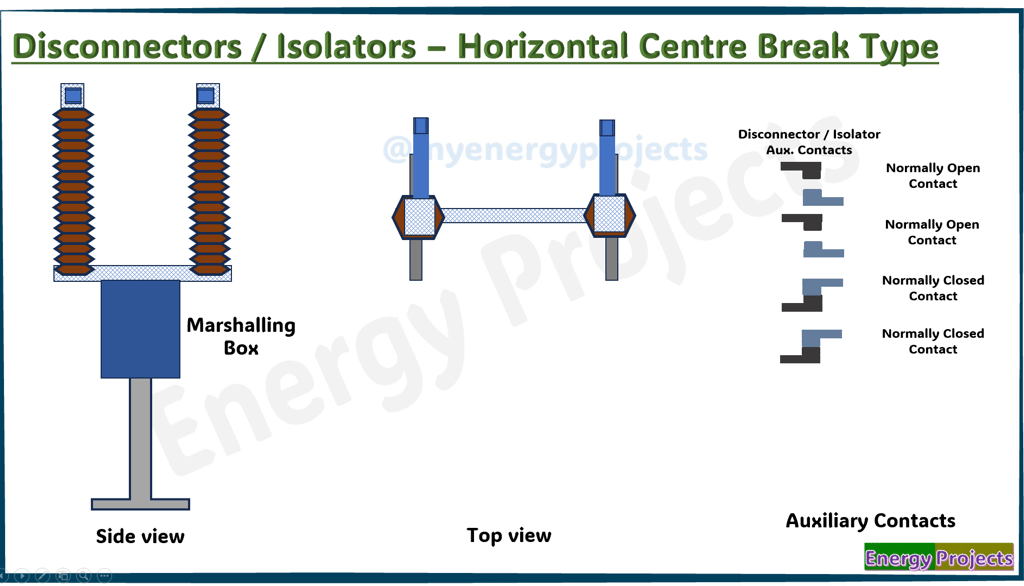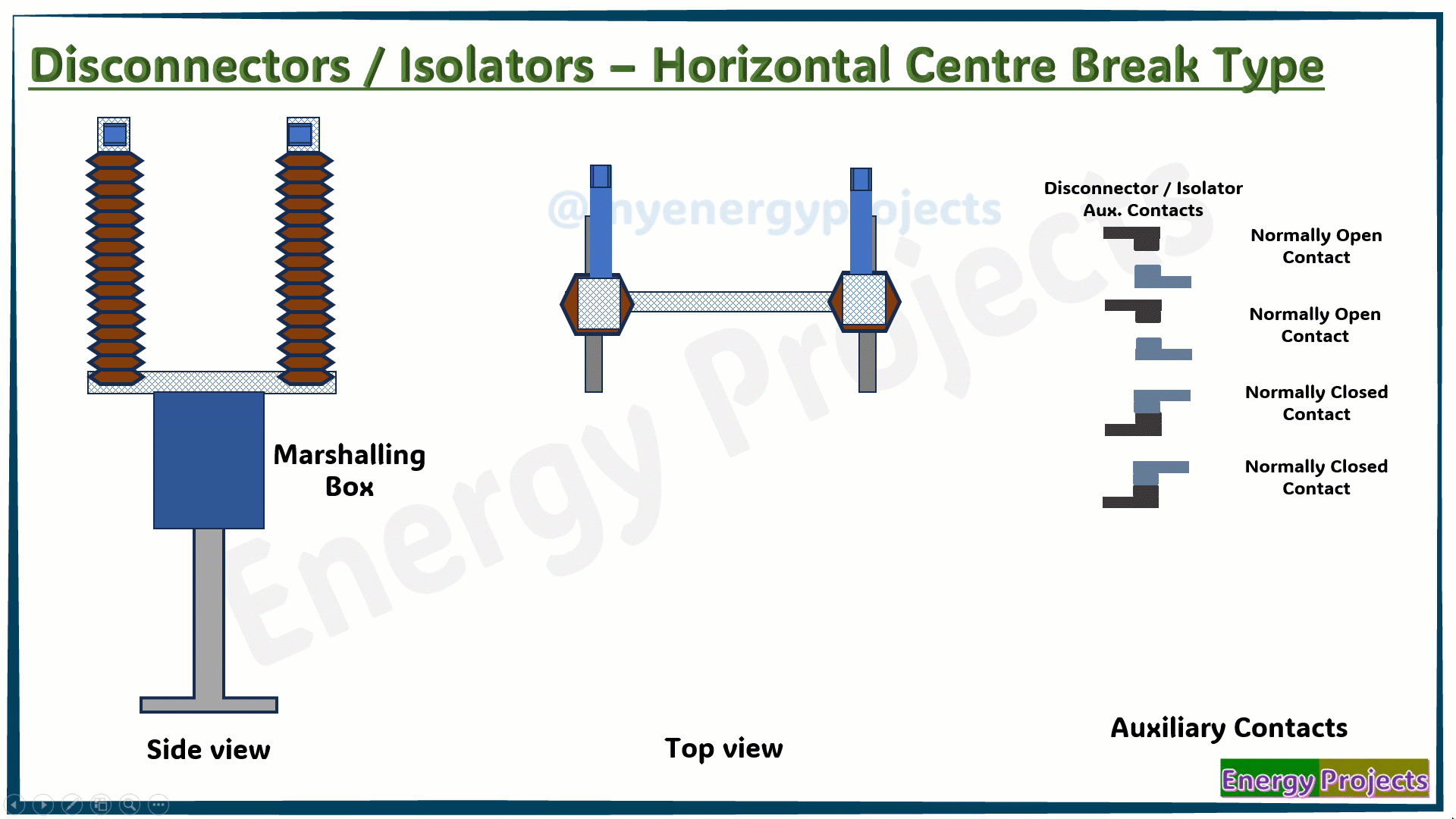04.Horizontal Centre Break type Disconnectors
Track Sequence of Engineering
A Horizontal Centre Break-Type Disconnector is a type of isolator used in high-voltage electrical systems that interrupts the circuit by rotating two arms horizontally away from a central contact point. It features a pair of movable blades that pivot outward in opposite directions from a central hinge, providing a clear and visible isolation gap for enhanced safety. This configuration ensures reliable disconnection while maintaining proper phase-to-phase and phase-to-ground clearances.
The horizontal movement allows for effective use in substations with sufficient lateral space and is especially suited for installations requiring symmetrical operation and straightforward maintenance access. These disconnectors are widely used where clear visual confirmation of the isolation and mechanical robustness are critical. Operation can be manual or motor-driven depending on system requirements.
Advantages
Provides a clear horizontal isolation gap for enhanced safety and visibility.
Symmetrical design allows for straightforward operation and maintenance.
Well-suited for substations with sufficient horizontal space and accessible layout.
Reliable performance with relatively simple mechanical construction.
Effective in high-voltage outdoor installations due to wide phase-to-phase clearance.
Disadvantages
Requires ample horizontal space, which may not be suitable for compact substations.
Exposure of moving parts to environmental conditions may impact durability.
Precise alignment of the center pivot mechanism is essential for consistent operation.
Must be operated only when the circuit is fully de-energized, as it cannot interrupt load or fault current.
Operation:
The Horizontal Centre Break Disconnector operates by rotating two contact arms horizontally outward from a central point to break the circuit. It must be operated only when the circuit is de-energized to ensure safe isolation. Please note that the disconnector moves in the horizontal direction during operation.
Auxiliary Contacts :
Auxiliary contacts are secondary switching contacts used in conjunction with primary switching devices like disconnectors or circuit breakers. They provide status signals (open or closed) to control systems or indicator panels. These contacts do not carry load current but help in automation and monitoring. They are essential for interlocking, safety logic, and remote supervision. The number of NC, NO , NOC ,NCO depends based on the specific requiremnets. You can see the operation of the Auxiliary contacts .




